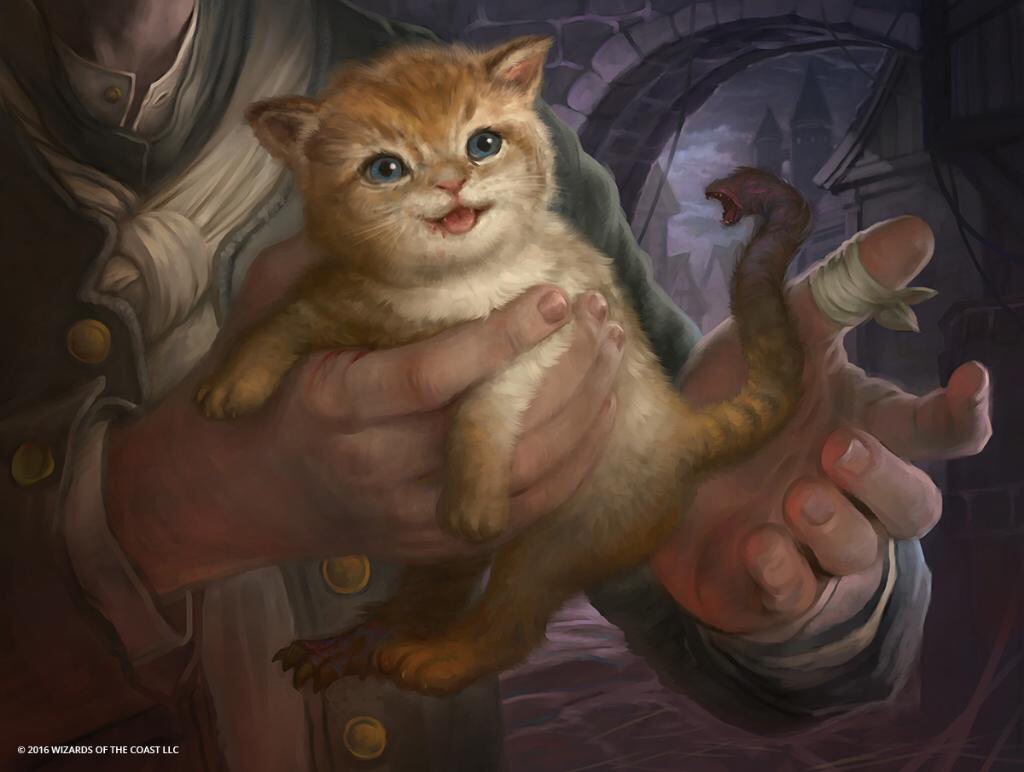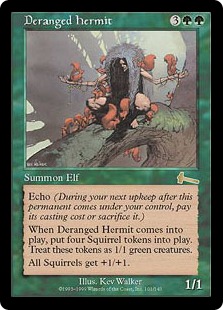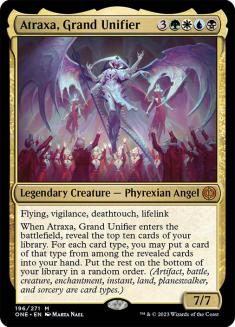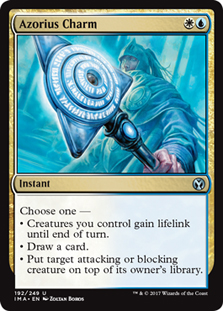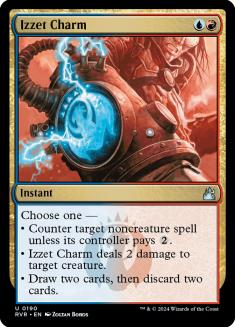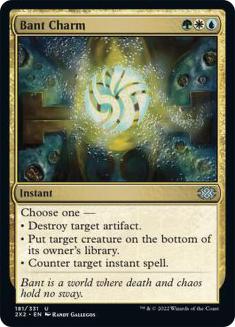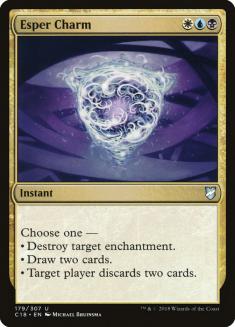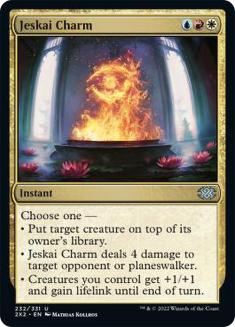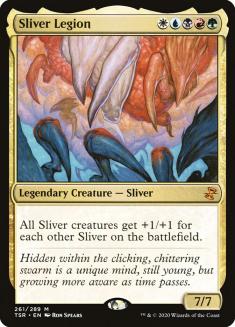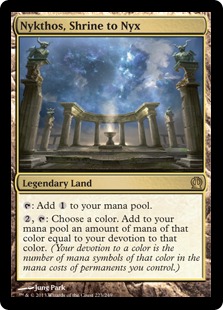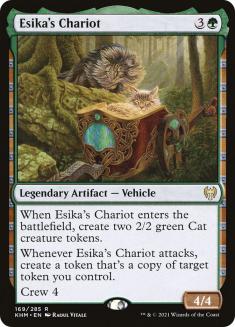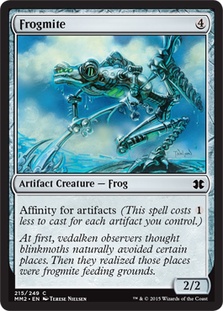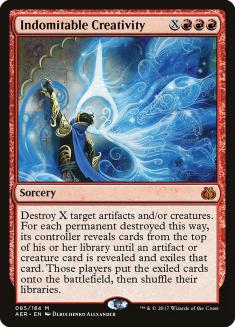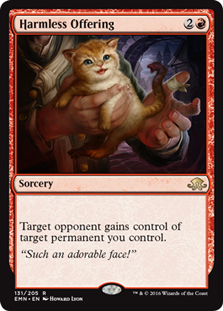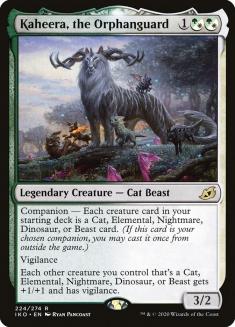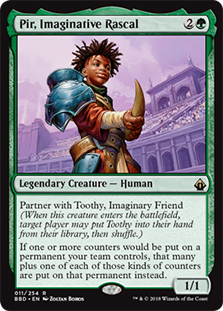Quick Links
- Competitive decks (Standard, Pioneer, Modern, and other formats played in tournaments)
- Commander decks (the most popular casual format, played with 100-card decks)
What’s in a (Magic Deck) Name?
Magic: The Gathering deck names can seem confusing, especially for those new to the game or who don’t play. What’s the difference between Selesnya Toxic and R/G Vehicles? What is a Grixis Death’s Shadow?
Believe it or not, Magic deck names used to be even more confusing. The first truly famous Magic deck, by Brian Weissman, was simply called “The Deck”. Other notable decks were named for pro wrestling catchphrases (“The Rock and His Millions“, after Dwayne Johnson‘s frequent mentions of his millions of fans) and breakfast (“Trix“, later joined by cereal-themed decks “Fruity Pebbles” and “Cocoa Pebbles“, which led to “Full English Breakfast” and related names).
Deranged Hermit and its Squirrel tokens, aka “The Rock and His Millions”.
Today, thankfully, Magic deck names are a lot more straightforward once you know the systems behind them, and they help a global audience know what a deck does in just a few words. The conventions of Magic deck names differ slightly between competitive formats, those usually found in tournaments, and Commander, Magic’s most common casual and multiplayer format.
For Commander deck names, jump down. For competitive deck names, read on!
Competitive Magic Deck Names
Competitive Magic deck names almost always have two components, the deck’s colors and at least one featured element. The colors are simply which colors, if any, in Magic’s five-color system that the deck uses. The featured element is the deck’s most prominent aspect, usually the way it wins.
Colors
Magic has five colors, represented by the small central orbs on the backs of most Magic cards. From the top and going clockwise, these are white, blue, black, red, and green.
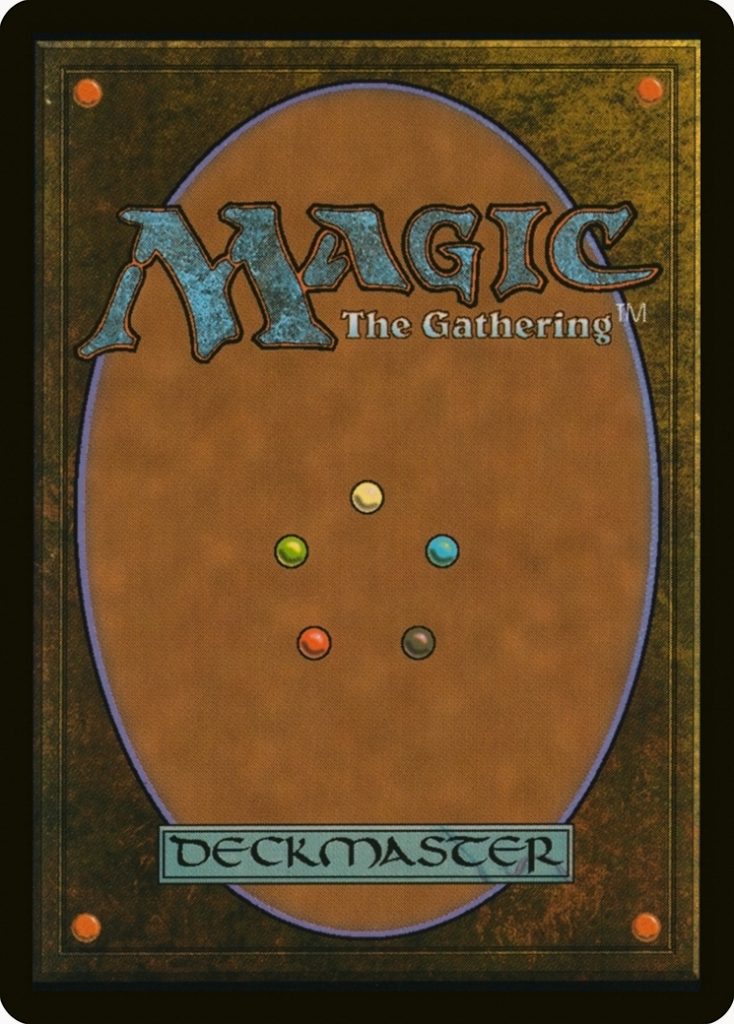
Magic deck names may refer to colors directly or indirectly. Direct references either include the whole color word (for example, a “Mono-Red” deck, where the “Mono” part means a deck is only red and none of the other colors) or single letters (an “R-G” or “R/G” deck is red and green). The five common letters are:
- W (white)
- U (blue)
- B (black)
- R (red)
- G (green)
This is the WUBRG system (pronounced “woo-berg”). Blue gets the letter “U” because its first two letters overlap with black, but no other color has a “U” in its name.
The WUBRG system can expand to any number of colors. For example, a G/W/U/B deck is a four-color deck that is missing only red.
Names for Color Combinations
Another common system uses special names for two-color or three-color combinations. There are ten of each, one for every possible combination.
Two-Color Combinations (“Guilds”)
The ten two-color combinations are often called “guilds” after Ravnica: City of Guilds, the set that introduced the first of the names. The ten guilds are, in color order:
- Azorius (white and blue, W/U)
- Orzhov (white and black, W/B)
- Boros (white and red, W/R)
- Selesnya (white and green, W/G)
- Dimir (blue and black, U/B)
- Izzet (blue and red, U/R)
- Simic (blue and green, U/G)
- Rakdos (black and red, B/R)
- Golgari (black and green, B/G)
- Gruul (red and green, R/G)
Color pairs are the same if the order of the colors is reversed. For example, a Red-Blue or R/U deck is Izzet, just as a Blue-Red or U/R deck is.
Three-Color Combinations (“Shards” and “Wedges”)
Three-color combinations are most often called “shards” if the three colors are allies (all next to one another on the Magic card back) or “wedges” if two of the three colors have an enemy (one color is on the opposite side from the other two). “Shards” get their names from the Shards of Alara, the set that introduced them and was broken into five mini-settings based on the colors. “Wedges” use names from the Khans of Tarkir set’s factions; the term “wedge” comes from the narrow triangle shape created by connecting the dots of the corresponding colors on the Magic card back.
The five shards are:
- Esper (white, blue, and black, W/U/B)
- Grixis (blue, black, and red, U/B/R)
- Jund (black, red, and green, B/R/G)
- Naya (red, green, and white, R/G/W)
- Bant (green, white, and blue, G/W/U)
The five wedges are:
- Jeskai (white, blue, and red, W/U/R)
- Sultai (blue, black, and green, U/B/G)
- Mardu (black, red, and white, B/R/W)
- Temur (red, green, and blue, R/G/U)
- Abzan (green, white, and black, G/W/B)
As with guilds, shard and wedge colors can appear in any order. For example, all six possible arrangements of Esper (W/U/B, W/B/U, U/W/B, U/B/W, B/W/U, B/U/W) are still Esper.
Other Numbers of Colors
Zero-color decks (decks with all artifacts, for instance) are “Colorless” (for example, Colorless Flyers).
One-color decks are “Mono-X”, where “X” is a color word or letter (for example, “Mono-Red” or “Mono-R”).
Four-color decks are “Four-Color” and do not often mention which color is missing.
Five-color decks are “Five-Color”. Simple enough!
Featured Elements
As mentioned above, a featured element is a deck’s most prominent aspect, often the way a deck wins. There are several types of featured elements. A few of the most common appear below.
Deck Speed or Plan
This covers the general idea of how a deck wins, as opposed to details. The four most common featured elements of this type are:
- Aggro (trying to win quickly through attacks)
- Control (trying to win slowly after exhausting the opponent)
- Midrange (trying to win by being more powerful than aggro but faster than control)
- Combo (trying to win all at once with a combination of cards)
Mechanic
This covers a keyword or card type or subtype common to many of the cards in the deck. Examples include:
- Devotion (short for the “Devotion to X” keyword, where X is a color)
- Vehicles (a subtype of artifacts)
Decks can keep a mechanic name even as they evolve away from using cards with the mechanic. For example, the Affinity deck was originally built around cards with the “affinity for artifacts” keyword. Over time, stronger cards replaced those “affinity for artifacts” cards. Many players continued calling the deck “Affinity”, while others renamed it “Artifact Aggro” (combining a mechanic and plan) or “Robots” (mechanic, after the artifact creatures).
Key Card(s)
This covers part or all of a card name or a combination of cards. Examples include:
- Indomitable Creativity (after the card of the same name)
- Donate Illusions (after Donate and Illusions of Grandeur, the deck’s winning combo)
- Grixis Cat Pact (after Demonic Pact and Harmless Offering, the latter of which has a kitten in its art)
A special type of key card, the companion, may show up in the names of decks in Pioneer and other formats that don’t rotate out cards. The companion’s first name usually shows up at the end of the deck name, in parentheses. For example, an “Azorius Control (Kaheera)” deck is an Azorius Control deck using Kaheera, the Orphanguard as a companion.
Commander Magic Deck Names
Commander decks are usually named after their commander. For example, a Nicol Bolas deck is simply that, a Commander deck with Nicol Bolas as the commander.
If a Commander deck has multiple cards in the command zone, the deck name usually contains all of those cards, in whole or in part. Examples include:
- Pir and Toothy (led by Pir, Imaginative Rascal and Toothy, Imaginary Friend, two “partner with” commanders)
- Skanos Dragonheart and Tavern Brawler (a “choose a Background” commander and a Background)
Some Commander players like to include other descriptive elements in their deck names, but the name of the Commander is the most common element, and the most useful.
Conclusion
Knowing the colors, featured elements, and commander names will help you understand what others’ decks are doing. You can also use these same elements to name your own decks and share what they mean with the world.
Good luck and have fun!

